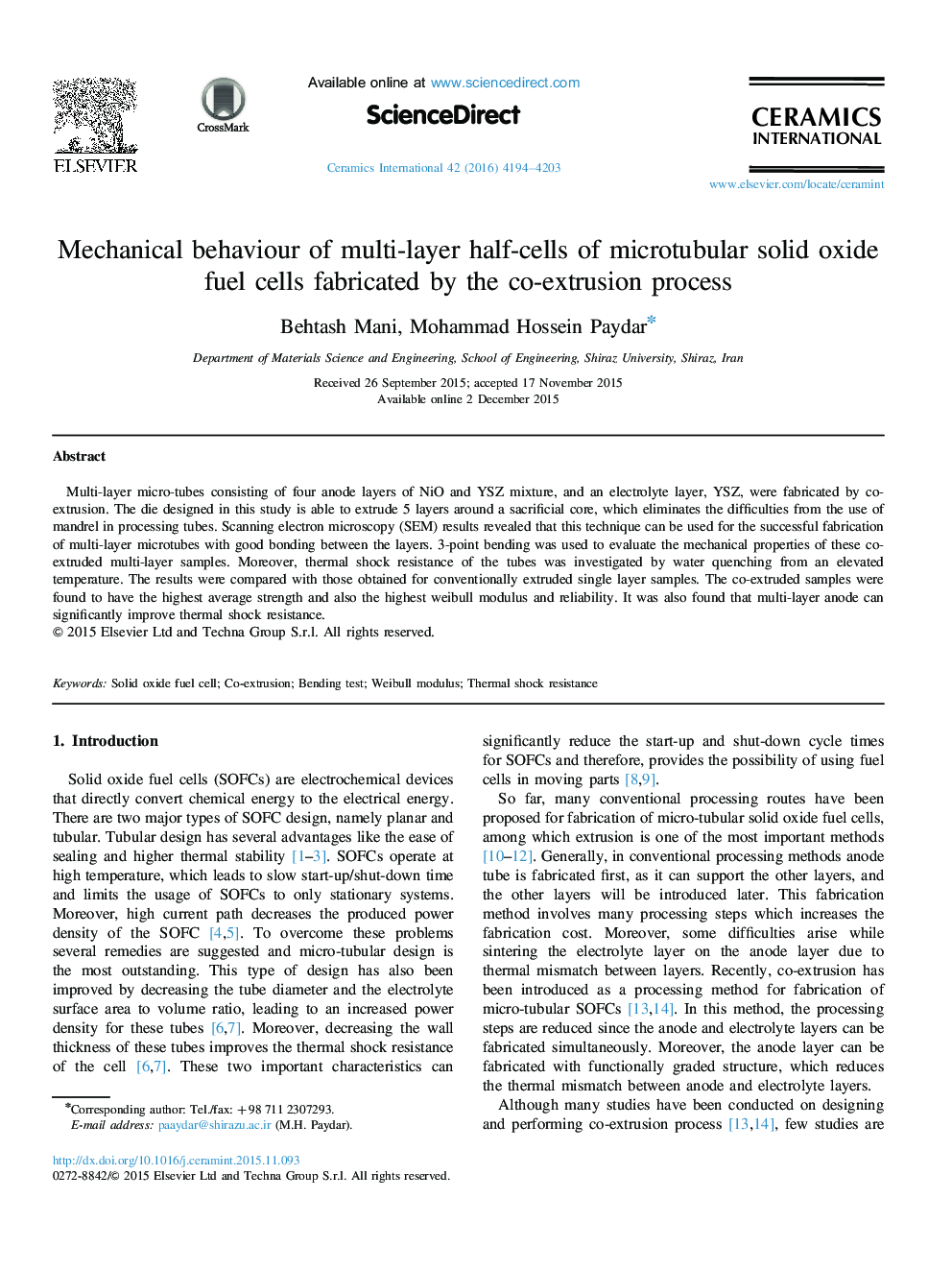| Article ID | Journal | Published Year | Pages | File Type |
|---|---|---|---|---|
| 1459155 | Ceramics International | 2016 | 10 Pages |
Multi-layer micro-tubes consisting of four anode layers of NiO and YSZ mixture, and an electrolyte layer, YSZ, were fabricated by co-extrusion. The die designed in this study is able to extrude 5 layers around a sacrificial core, which eliminates the difficulties from the use of mandrel in processing tubes. Scanning electron microscopy (SEM) results revealed that this technique can be used for the successful fabrication of multi-layer microtubes with good bonding between the layers. 3-point bending was used to evaluate the mechanical properties of these co-extruded multi-layer samples. Moreover, thermal shock resistance of the tubes was investigated by water quenching from an elevated temperature. The results were compared with those obtained for conventionally extruded single layer samples. The co-extruded samples were found to have the highest average strength and also the highest weibull modulus and reliability. It was also found that multi-layer anode can significantly improve thermal shock resistance.
